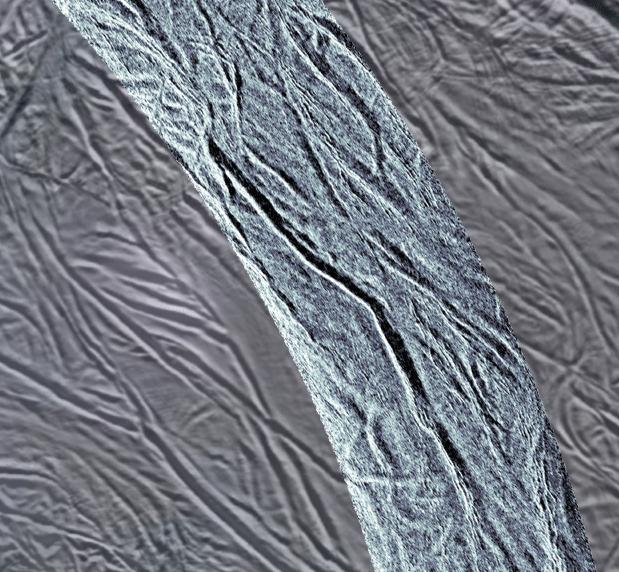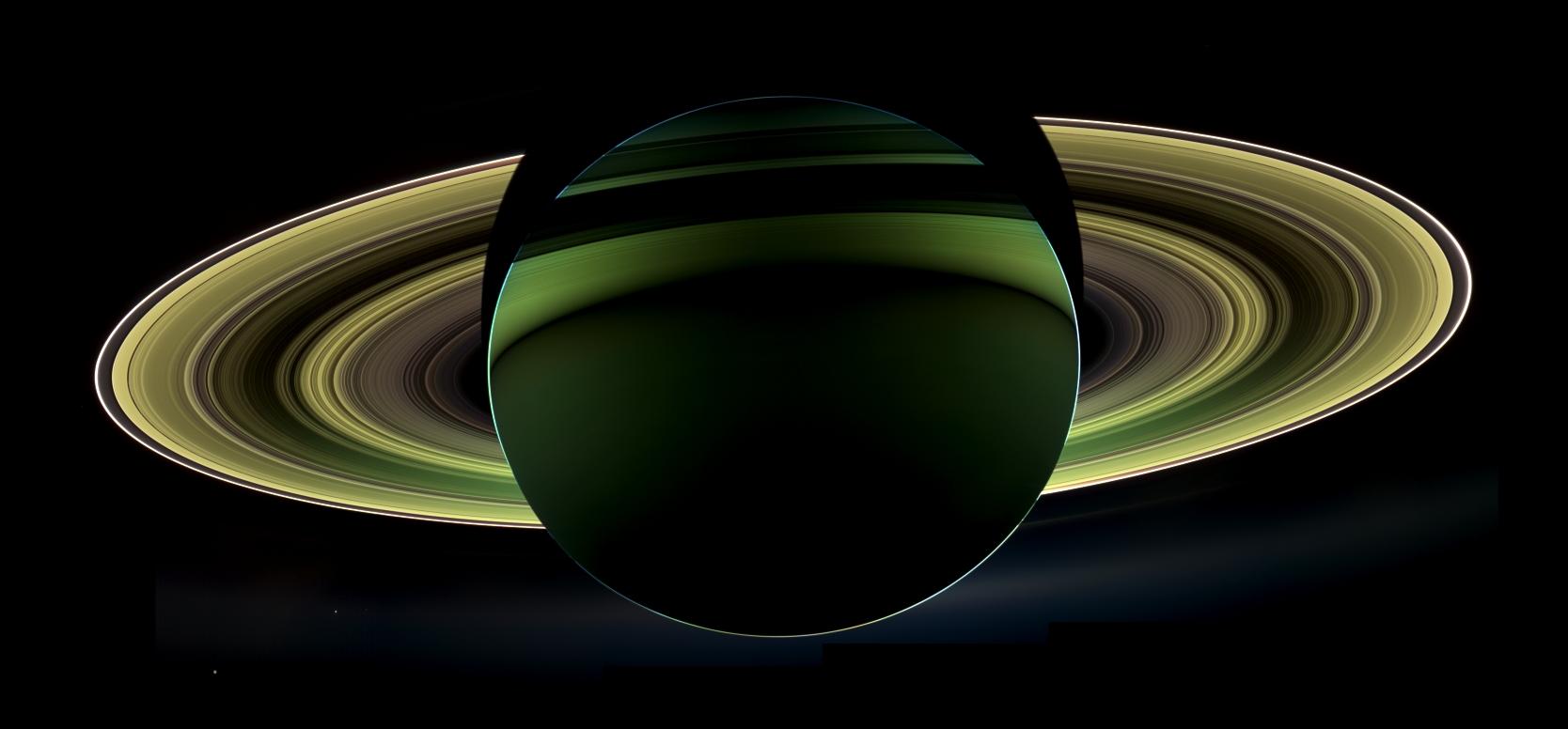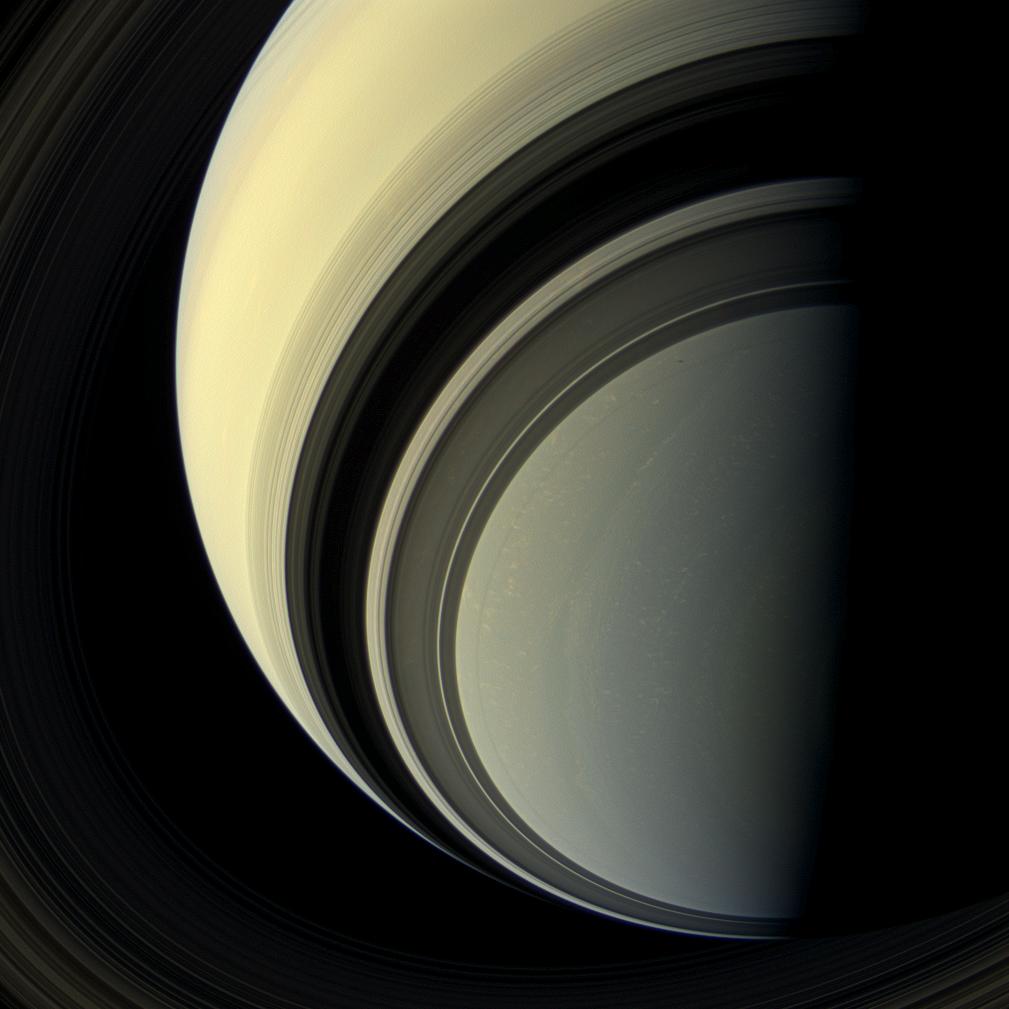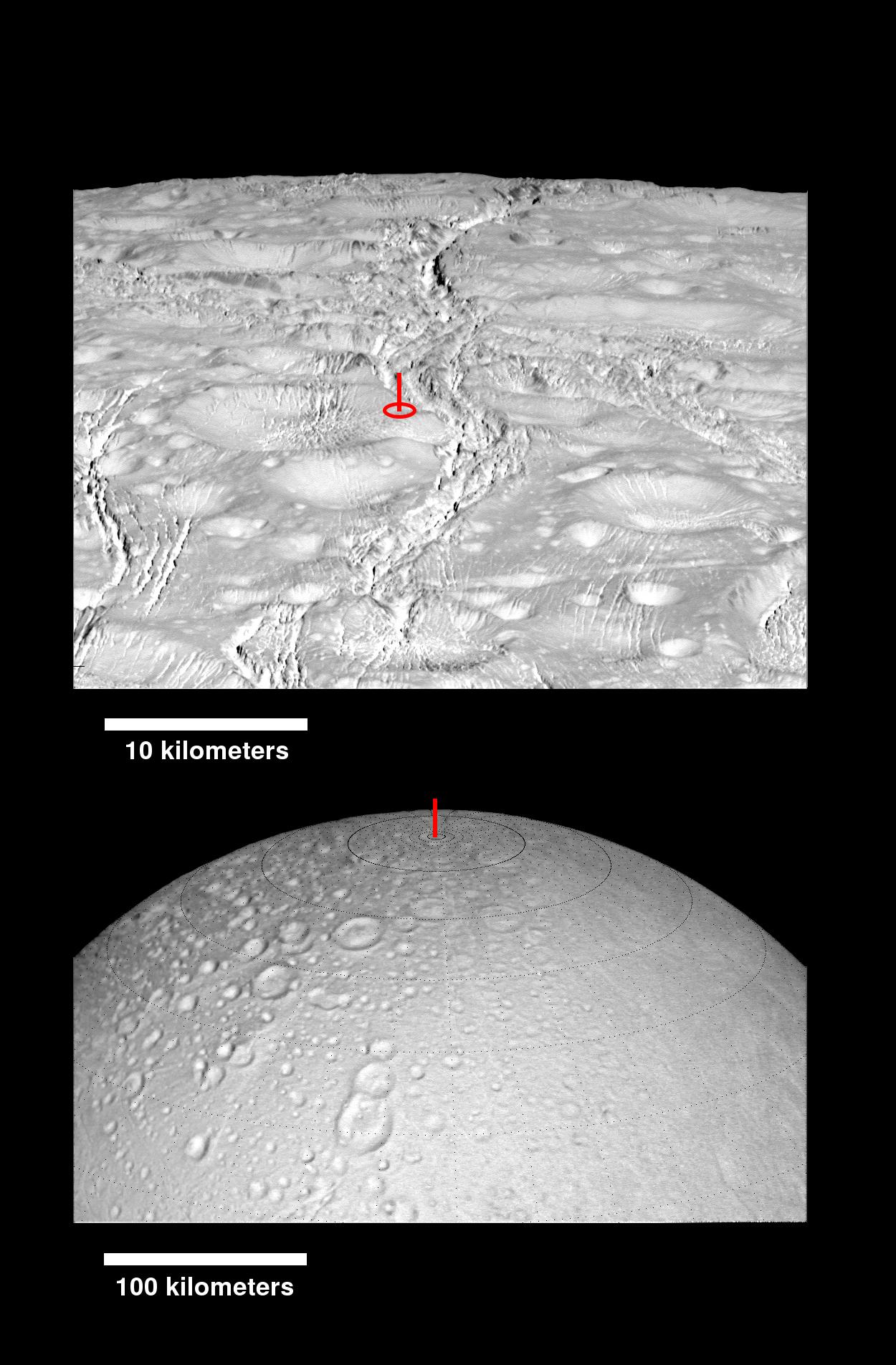Huygens
Type
Launch
Target
Objective
After hitching a ride to Saturn on NASA's Cassini orbiter, the Huygens probe from the European Space Agency parachuted onto the moon Titan. During nearly four hours of descent and landing, it measured wind and temperature, sampled the murky atmosphere, and analyzed and photographed the surface of the large, icy moon.
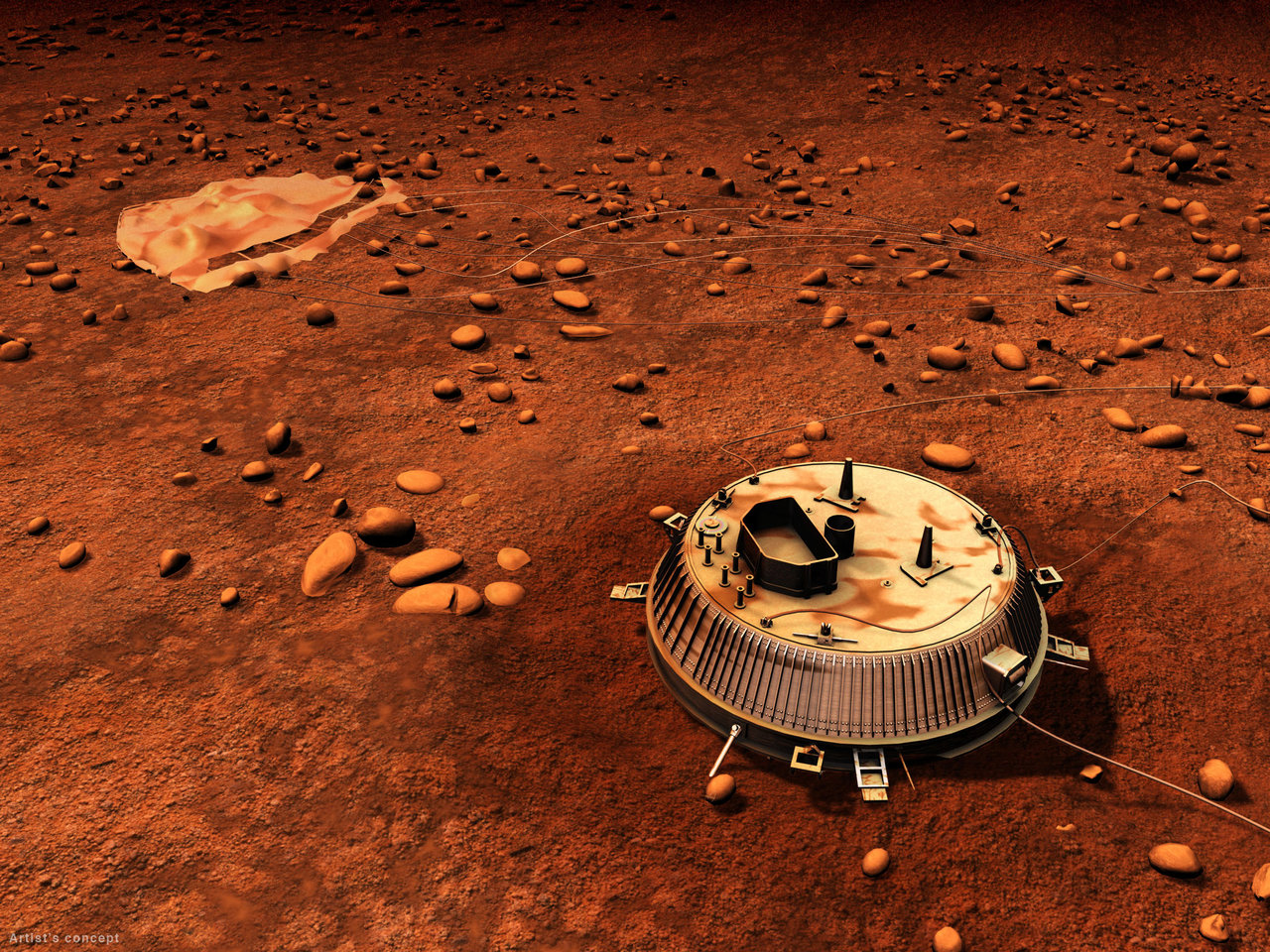
What was Huygens?
ESA's Huygens probe was designed to study the smog-like atmosphere of Saturn's largest moon, Titan, as it parachuted to the surface. It also carried cameras to photograph the moon's surface. Huygens traveled to Saturn aboard NASA's Cassini orbiter.
Nation | European Space Agency (ESA) |
Objective(s) | Titan Landing |
Spacecraft | Huygens |
Spacecraft Mass | 852-pounds (318-kilograms) |
Mission Design and Management | NASA / JPL / ESA |
Launch Vehicle | Titan 401B-Centaur (TC-21 / Titan 401 no. 4B-33) |
Launch Date and Time | Oct. 15, 1997 / 08:43 UT |
Launch Site | Cape Canaveral, Florida / Launch Complex 40 |
Scientific Instruments | 1. Atmospheric Structure Instrument (HASI) 2. Gas Chromatograph Neutral Mass Spectrometer (GC/MS) 3. Aerosol Collector and Pyrolyzer (ACP) 4. Descent Imager/Spectral Radiometer (DISR) 5. Surface Science Package (SSP) 6. Doppler Wind Experiment (DWE) |
Firsts
- Huygens' landing was the first by a spacecraft in the outer solar system, and the most distant landing from Earth.
Key Dates
Oct. 15, 1997: Launch
Jan. 14, 2005: Titan landing
In Depth: Huygens
The Cassini-Huygens project was a cooperative project between NASA and ESA (as well as the Italian Space Agency, ASI). NASA supplied the main spacecraft, the orbiter Cassini, and ESA supplied the lander, Huygens.
The Huygens probe descended into the atmosphere of Titan, Saturn’s largest moon, in 2005. It provided a detailed study of Titan's atmosphere during its 2.5-hour descent to the surface. It relayed data and images from Titan's muddy surface for another hour and 10 minutes.
The primary scientific goals of the mission included a diverse set of investigations of Saturn, its moons, and its near environment.
The 6,900-pound (3,132-kilogram) orbiter with an original design life of 11 years was powered by three radioisotope thermoelectric generators (RTGs), of the same design as the RTGs carried aboard Ulysses, Galileo, and New Horizons.
The 740-pound (335-kilogram) Huygens was named after the Dutch physicist Christiaan Huygens (1629-1695). Cassini was named after Italian astronomer Giovanni Cassini (1625-1712).
Huygens was designed to investigate Titan’s atmosphere, including chemical properties, wind, temperature, and pressure profiles from about 100 miles (170 kilometers) down to the moon’s surface. The probe was not designed to survive past landing although scientists did not rule out the possibility.

Cassini’s trip to Saturn included four gravity assists. Seven months after launch, the spacecraft passed Venus on April 26, 1998, at a range of about 175 miles (284 kilometers), gaining 16,330 miles per hour (26,280 kilometers per hour).
Cassini performed a second flyby of Venus on June 24, 1999, at a range of about 390 miles (623 kilometers) and one of Earth at 03:28 UT Aug. 18, 1999, at a range of about 730 miles (1,171 kilometers), before heading to Jupiter.
During this portion of the traverse, Cassini passed by the asteroid 2685 Masursky on Jan. 23, 2000, flying as close as about 932,000 miles (1.5 million kilometers) at 09:58 UT. During the encounter, Cassini used its remote sensing instruments to investigate the asteroid’s size, dimensions and albedo.
Nearly a year later, on Dec. 30, 2000, the spacecraft passed by Jupiter at a distance of about 6 million miles (9.7 million kilometers). Among the data it returned was a detailed global color image of Jupiter, probably the most complete image of the whole planet at that time.
In 2001-2002, controllers noticed a “haze” in images returned by the narrow-angle camera but it was eliminated after phases of heating the spacecraft.
Cassini’s investigations en route to Saturn included an experiment in October 2003 in which scientists observed a frequency shift in radio waves to and from the probe as those signals traveled close to the Sun. These results confirmed theoretical predictions based on Einstein’s general theory of relativity.
In May 2004, Cassini-Huygens entered the Saturn system—the gravitational pull of Saturn became stronger than the pull from the Sun. After more than five years of inactivity, Cassini’s main engine was fired up May 27 as a test prior to orbital insertion.
After a flyby of the moon Phoebe on June 11 at a distance of just 1,285 miles (2,068 kilometers), Cassini performed one more correction five days later.
Finally, on July 1, 2004, the spacecraft engine fired for 96 minutes, thus inserting Cassini-Huygens into a 0.012 × 5.6 million-mile (0.02 × 9 million-kilometer) orbit around Saturn. It was the first human-made object to enter orbit around Saturn.
In its initial months, Cassini provided detailed data on Titan during three flybys (July 2, October 27 and December 13) and discovered two small new moons, Methone and Pallene.
On Christmas Day 2004 at 02:00 UT, the Huygens lander, which had remained dormant for more than six years, separated from Cassini and began its 22-day coast to Titan. It entered Titan’s atmosphere at 09:05:56 UT Jan. 14, 2005, and within four minutes had deployed its 28-foot (8.5-meter) diameter main parachute.
A minute later, Huygens began transmitting a wealth of information back to Cassini for more than two hours before impacting on the surface of Titan at 11:38:11 UT at a velocity of 15 feet per second (4.54 meters per second). Landing coordinates were 192.32 degrees west longitude and 10.25 degrees south latitude, about 4 miles (7 kilometers) from its target point.
A problem in the communications program limited the number of images that Huygens transmitted to Cassini, from about 700 to 376. Yet, to the excitement of planetary scientists back on Earth, it continued its transmissions for another three hours and 10 minutes during which it transmitted a view of its surroundings (224 images of the same view).
Huygens appears to have landed on a surface resembling sand made of ice grains. Surface pictures showed a flat plain littered with pebbles as well as evidence of liquid acting on the terrain in the recent past. Subsequent data confirmed the existence of liquid hydrocarbon lakes in the polar regions of Titan.
In April 2016, ESA announced that one of Titan’s three large seas close to the north pole, known as Ligela Mare, is filled with pure liquid methane, with a seabed covered by a sludge of organic-rich material.
The Cassini orbiter, meanwhile, continued its main mission investigating the Saturn system, its voyage punctuated by repeated targeted flybys – flybys actively implemented by trajectory corrections – of various moons, particularly Titan, Enceladus, Tethys, Hyperion, Dione, Rhea, and Iapetus.
Cassini ended its primary mission May 27, 2008, with its 43rd flyby of Titan. During this period, the spacecraft discovered two new moons, Daphnis and Anthe.
It also uncovered much valuable data about Titan, including the first radar images of the moon’s surface taken during its Oct. 27, 2004, flyby. Cassini found clear evidence of large lakes of liquid hydrocarbon in the northern latitudes of Titan.
The spacecraft also performed a number of radio occultation experiments to study the size-distribution of particles in Saturn’s rings and atmosphere.
Perhaps the most exciting flyby was March 12, 2008, when Cassini flew within 31 miles (50 kilometers) of the surface of Enceladus, passing through the plumes from its southern geysers. The spacecraft detected water and carbon dioxide and also mapped surface features.
In April 2008, NASA approved a two-year extension of its mission (60 more Saturn orbits), which officially began July 1, 2008, and was called the Cassini Equinox Mission (it coincided with Saturn’s equinox).
Additional Saturn moons were identified (Aegaeon and S/2009 S 1, the latter a “propeller moonlet” perhaps only about 1,300 feet or 400 meters across) while encounters with Enceladus allowed Cassini to acquire very high-resolution images of its surface and to directly sample its cryo-volcanic plumes that appear to contain complex organic chemicals.
During the two-year Equinox Mission, which ended in September 2010, Cassini performed 26 targeted flybys of Titan, seven of Enceladus, and one each of Dione, Rhea and Helene.
On Feb. 3, 2010, NASA announced that Cassini’s mission would continue beyond the original two-year extension into the new Cassini Solstice Mission that would last until September 2017, a few months past Saturn’s summer solstice.
The new mission was named after the Saturnian summer solstice occurring in May 2017, which marked the beginning of summer in the northern hemisphere and winter in the southern hemisphere. (The spacecraft had arrived at Saturn just after the planet’s northern winter solstice. The extension thus allowed scientists to study a complete seasonal period of the planet.)
The Cassini Solstice Mission was guided principally by its ability to continue close studies of Titan, particularly seasonal climate change such as storms, flooding and changes in lakes. Other targets for study included Enceladus, particularly its astrobiological potential, icy moons such as Dione and Rhea and Saturn’s magnetosphere and rings.
The extension allowed 155 orbits around Saturn, plus 54 flybys of Titan, 11 of Enceladus, two of Rhea, and three of Dione.
At the beginning of the Solstice Mission, on Nov. 2, 2010, Cassini ran into a problem when a malfunction in the spacecraft’s computer shut down all nonessential systems. Slowly, over a period of about three weeks, controllers were able to restore all of Cassini’s instruments to working order. Only one targeted flyby of Titan was affected during the interim.
On March 6, 2014, the spacecraft conducted its 100th flyby of Titan (at a range of about 930 miles or 1,500 kilometers), conducting gravity measurements in order to explore the existence of a global subsurface ocean.
By July 2014, Cassini had identified at least 101 distinct geysers erupting on the south polar region of Enceledaus. Researchers concluded that it is possible for liquid water to reach all the way to the surface from the moon’s underground sea (announced in April 2014). The presence of this salty underground ocean, about 19 to 25 miles (30–40 kilometers) thick, under a 6-mile (10-kilometer) ice shell, raises the possibility that microbial life might exist there.
Significant events in 2015-2016 included a close flyby (at about 29,000 miles or 47,000 kilometers) of Rhea in February 2015, allowing very high-resolution images of the natural satellite. There was a flyby of the irregularly-shaped Hyperion in May 2015 at about 21,000 miles (34,000 kilometers) showing a deeply impact-scarred surface. The last two flybys of Dione were in June and August 2015, at a range of just 321 and 295 miles (516 and 474 kilometers) respectively.
Perhaps the most spectacular mission event of the year was Cassini’s “deep-dive” to just 30 miles (49 kilometers) above the south polar region of the geologically active Enceladus in October 2015. During the encounter, the spacecraft’s gas analyzer and dust detector instruments sampled the moon’s plume of gas and dust-sized icy particles.
A final flyby of Enceladus was carried out in December at a range of about 3,100 miles (4,999 kilometers), concluding a chapter in the Cassini mission’s encounters with Saturn’s moons.
In December 2015, Cassini initiated a number of delicate orbital maneuvers designed to tilt the spacecraft’s orbit out of Saturn’s ring plane. Each maneuver was followed by a gravity-assist from Titan (“Titan does all the heavy lifting,” noted Earl Maize, Cassini project manager at JPL), thus sending the vehicle to an increasingly higher inclination (relative to Saturn’s equator). These maneuvers set up Titan for its final dramatic year in 2016–2017, involving two distinct phases of the mission.
On Nov. 30, 2016, Cassini set off on a path that carried it high above and under Saturn’s poles, diving every seven days through the hitherto unexplored region at the outer edge of the main rings. This phase of the mission, called “Cassini’s Ring-Grazing Orbits” involved 20 “dives” through this region. It ended April 22, 2017. During some of these passes, the spacecraft directly sampled ring particles and molecules of faint gases close to the rings.
In March and April 2017, ring crossings had the spacecraft fly through the dusty outer regions of the F ring. After the last ring-grazing orbit concluded April 22, 2017, a flyby of Titan reshaped Cassini’s trajectory to send it on a new phase of the mission, the “Grand Finale,” involving 22 plunges, the first on April 26 through the 1,490-mile (2,400-kilometer) gap between Saturn and its innermost ring.
The mission concluded Sept. 15, 2017, on its 293rd orbit of Saturn when Cassini plunged into the Saturnian atmosphere ending one of the most ambitious and spectacular missions in the history of planetary exploration.
By most estimates, the spacecraft burned up in the atmosphere and was destroyed about 45 seconds after the last transmission. During the final moments of the descent, data from eight of Cassini’s science instruments beamed important data back to Earth, giving insight into the planet’s formation and evolution.
Key Source
Siddiqi, Asif A. Beyond Earth: A Chronicle of Deep Space Exploration, 1958-2016. NASA History Program Office, 2018.


